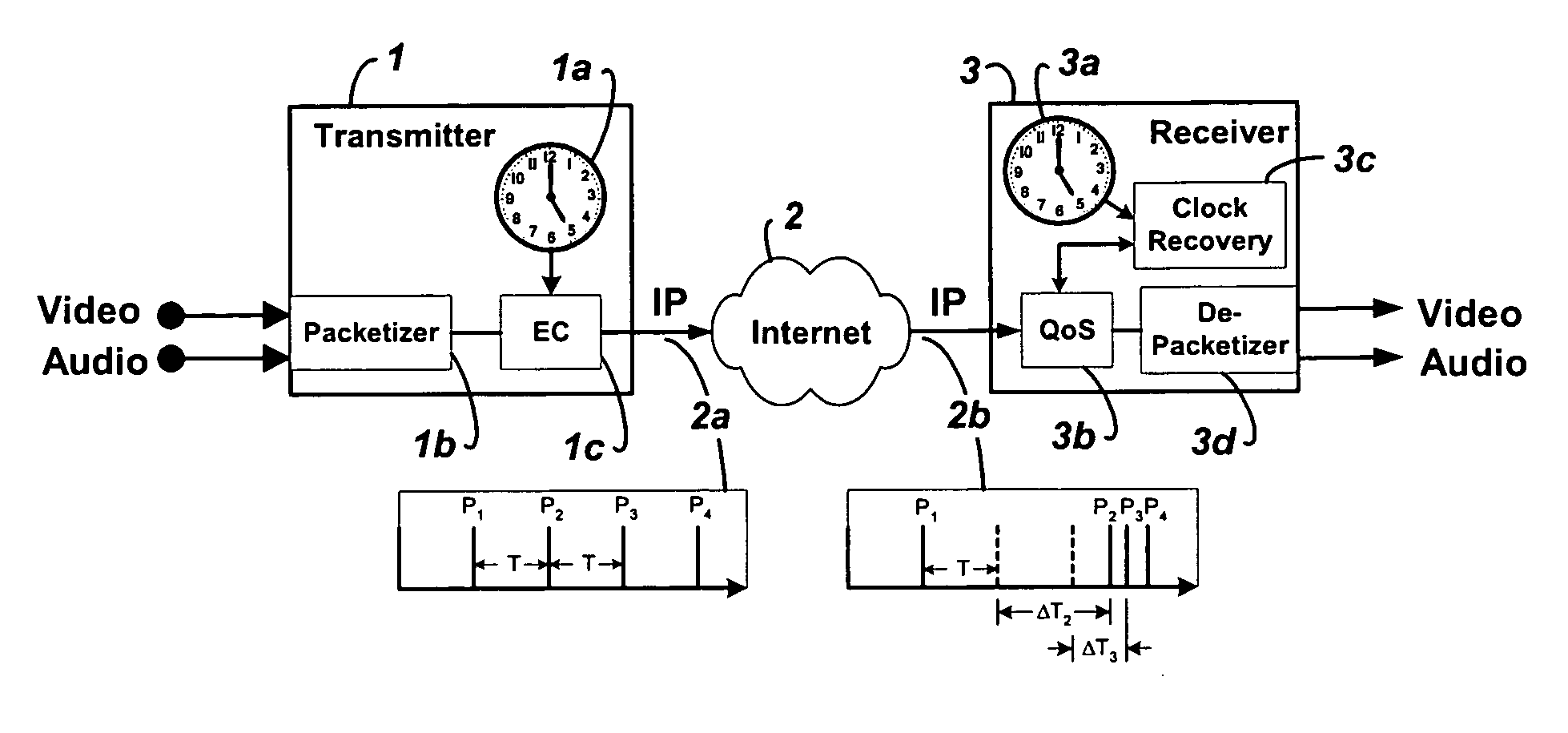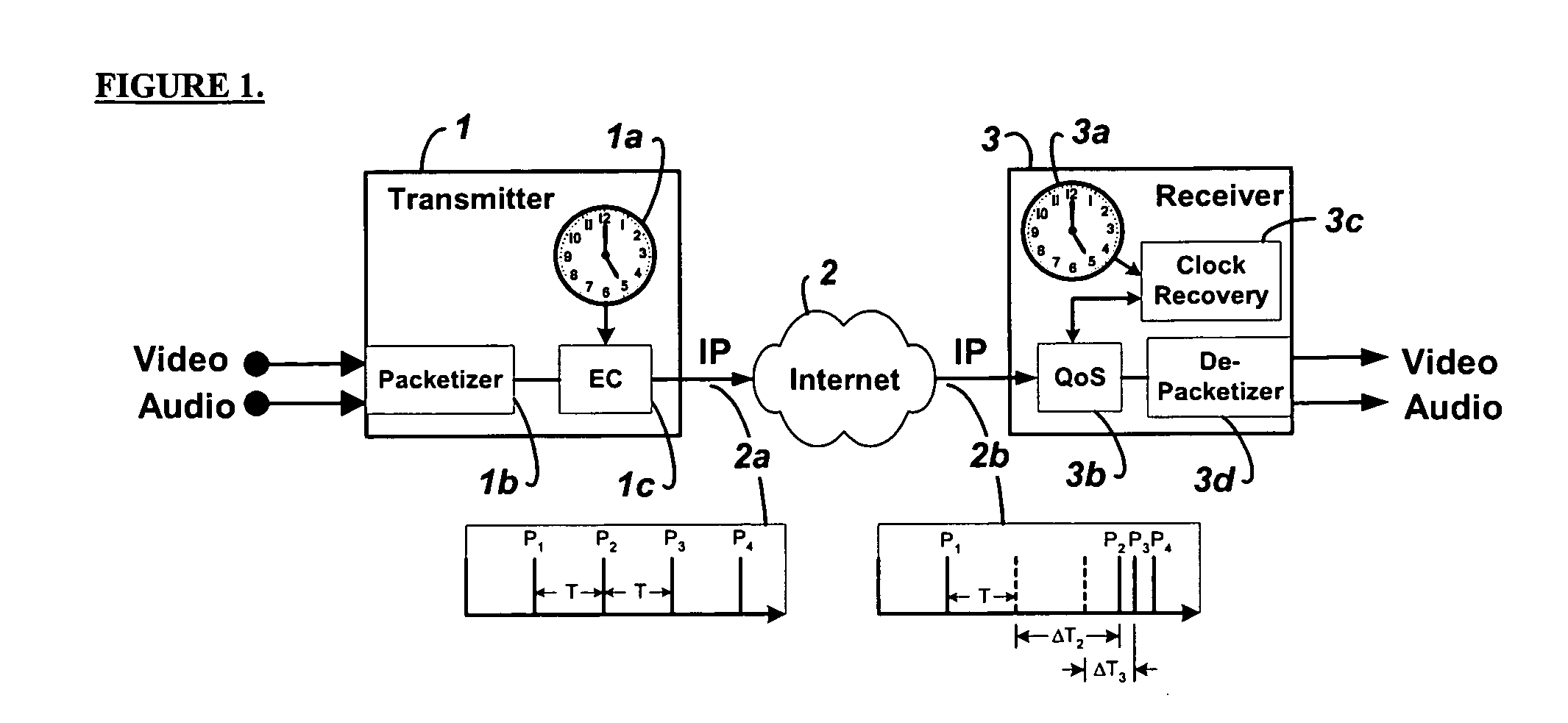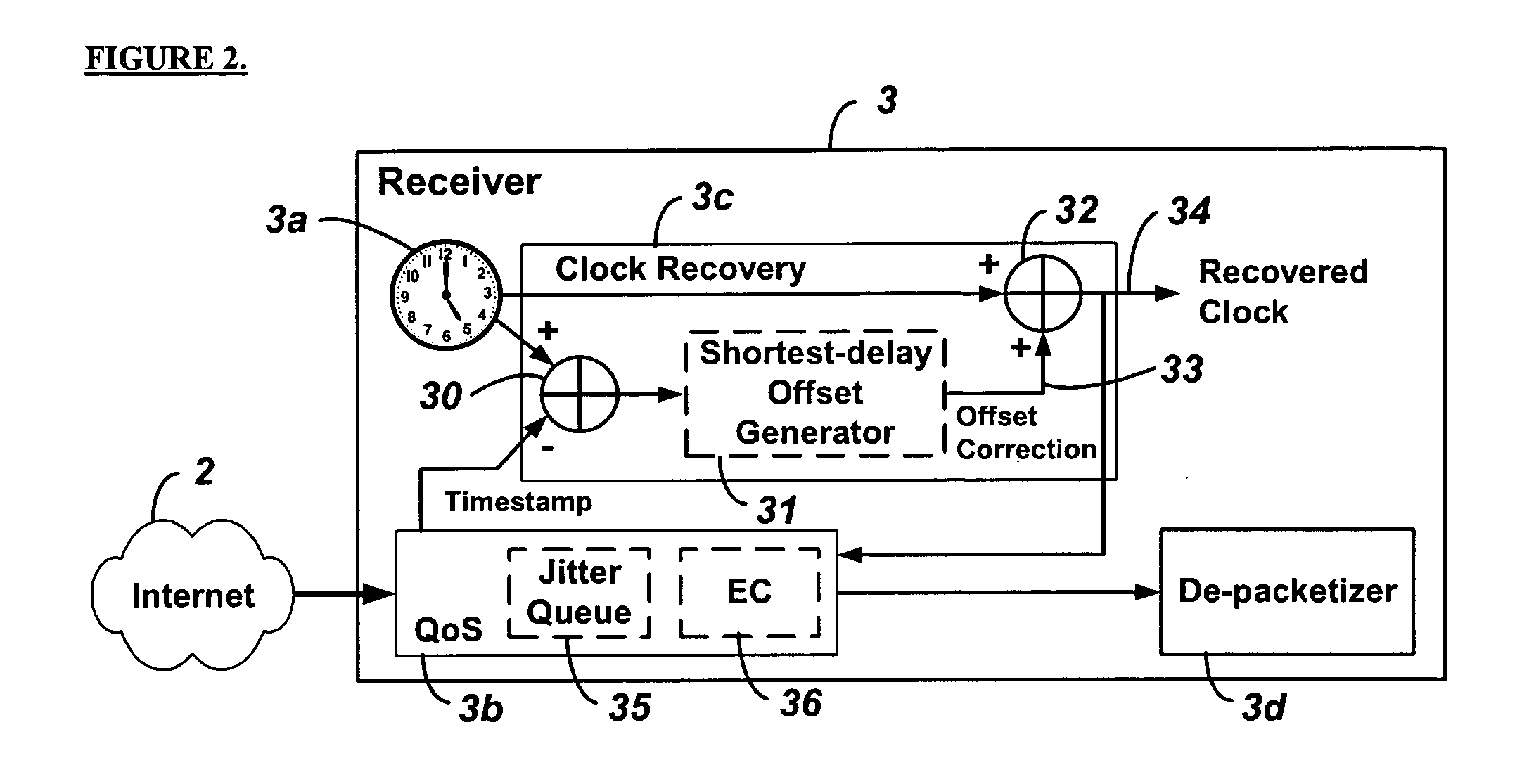System and method for clock synchronization over packet-switched networks
a packet-switched network and clock synchronization technology, applied in the field of synchronizing clocks over packet-switched networks, can solve the problems of increasing the jitter of real-time signals, affecting the synchronization of clocks, so as to facilitate the replacement of more traditional circuit-switched communications, improve the ability of packet-switched networks, and improve the effect of resolution
- Summary
- Abstract
- Description
- Claims
- Application Information
AI Technical Summary
Benefits of technology
Problems solved by technology
Method used
Image
Examples
Embodiment Construction
[0016]FIG. 1 shows an embodiment of the invention that provides a simplified mechanism for synchronizing a local clock 3a in a receiver to a remote clock 1a at a transmitter over a packet-switched network 2 comprising significant network packet jitter. FIG. 2 provides more detail for an embodiment of a clock recovery mechanism 3c and quality of service (QoS) mechanisms 3b. In this embodiment, the clock recovery mechanism 3c uses a shortest-delay offset generator 31 to attenuate the effects of network jitter on transmitted timing data to allow the effective implementation of quality of service mechanisms 3b and standard clock recovery techniques. An effective implementation of QoS mechanisms 3b can mitigate the adverse effects of packet-switched communications networks and thereby facilitate the replacement of more traditional circuit-switched communications with packet-switched transport and Internet links. Effective synchronization of a local timing reference 3c to a remote clock 1...
PUM
 Login to View More
Login to View More Abstract
Description
Claims
Application Information
 Login to View More
Login to View More - R&D
- Intellectual Property
- Life Sciences
- Materials
- Tech Scout
- Unparalleled Data Quality
- Higher Quality Content
- 60% Fewer Hallucinations
Browse by: Latest US Patents, China's latest patents, Technical Efficacy Thesaurus, Application Domain, Technology Topic, Popular Technical Reports.
© 2025 PatSnap. All rights reserved.Legal|Privacy policy|Modern Slavery Act Transparency Statement|Sitemap|About US| Contact US: help@patsnap.com



